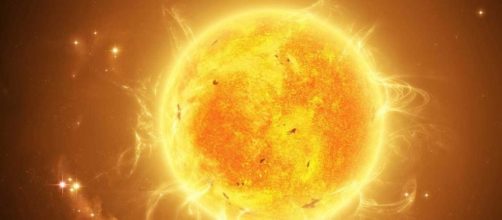By analyzing samples of ancient pine trees, scientists have identified a weird pattern in their formation indicating a weird and unique solar activity that took place at around 5480 BC. They concluded that there had been a severe change in the sun's magnetic activity or maybe a number of solar burst emissions.
Their work was published in Proceedings of the National Academy under the title ''Large14C excursion in 5480 BC indicates an abnormal sun in the mid-Holocene.''
Studying ancient trees
The heat and energy that come from the sun affects everything on the surface of the earth.
The activity of the sun is not a constant thing, it varies from time to time. For example, if the sun is very active, the carbon14 isotope decreases in the earth's atmosphere, while when the sun is inactive, the carbon14 isotope increases in the atmosphere, The amount of the carbon isotope depends on the amount of radiation coming from the sun. Scientists have been analyzing samples of a type of Pine Trees called bristlecone, pine trees are a unique species of plants that could live for many thousands of years.
Unique solar behavior
In order for the researchers to make sure that their results are true and reliable, they measured the levels of the carbon14 isotope of the bristlecone pine trees in three different laboratories.
The researchers found that the change in carbon 14 was abrupt, and it was significantly different than any other similar measurements that was performed before on carbon 14, except for a cosmic rays event that occurred in 775 AD and 994 AD. The researchers analyzed annual data rather than data for each decade, which allowed them to have more accurate calculations for the exact time when this unique solar incident occurred.
So far no one knows what really happened back then to the sun, more studies and discoveries need to be done to have a better picture. There are three proposed scenarios, either significant change in the magnetic activity of the sun, a series of bursts that were produced by the sun, or very weak solar activity at that time period.

